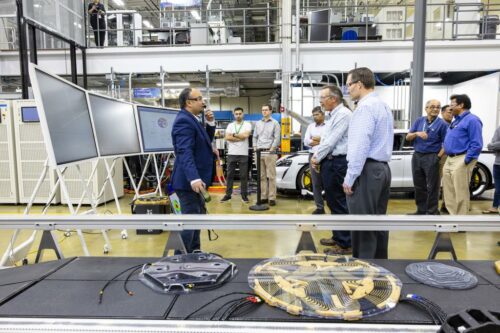The future of electric vehicle charging with a 270-kW wireless power demonstration, achieving fast and efficient energy transfer.

Oak Ridge National Laboratory and Volkswagen Group of America collaborated to conduct the first 270-kW wireless power transfer demonstration to a Porsche Taycan, a light-duty electric vehicle. This utilized ORNL’s polyphase wireless charging system, overcoming challenges of space, weight, and volume typical in conventional large systems. Current wireless charging solutions for light-duty vehicles aim for up to 11 kW, with efficiencies reaching 92%, following industry standards up to 20 kW.
To overcome challenges, ORNL used a system in the Porsche Taycan featuring polyphase electromagnetic coils about 19 inches wide to maximize power density. Similar to consumer device wireless charging, this method employs unique coil designs to transfer high power levels through rotating magnetic fields. This system integrates smoothly into the vehicle’s undercarriage.
Additionally, the wireless power transfer technology incorporates protective measures to prevent voltage and current from surpassing safe limits and safeguards against overheating and short-circuiting. These protective systems can initiate shutdown procedures in response to power interruptions or unexpected conditions, ensuring safe and reliable power transfer operations.
Power density is crucial in wireless charging as it denotes the amount of power a system can manage relative to its size. The objective is to enhance efficiencies and performance by achieving higher densities in smaller, more compact setups. ORNL’s system exemplifies this capability by achieving a 50% increase in state of charge within 10 minutes, operating at over 95% efficiency. The power transfer was successfully conducted over a 4.75-inch gap between the ground and the coil mounted underneath the vehicle.
The recent 270-kW demonstration marks the culmination of a collaborative project announced by ORNL and Volkswagen in 2021. Leveraging Volkswagen’s expertise in vehicle integration, ORNL’s research team tested this innovative wireless charging concept on an electric vehicle. The focus was on developing the highest-power density wireless charging system through a novel design emphasizing rotating electromagnetic fields. These fields optimize efficiency by minimizing voltage drops and eliminating electric current fluctuations and cancellations between the coil phase windings.









